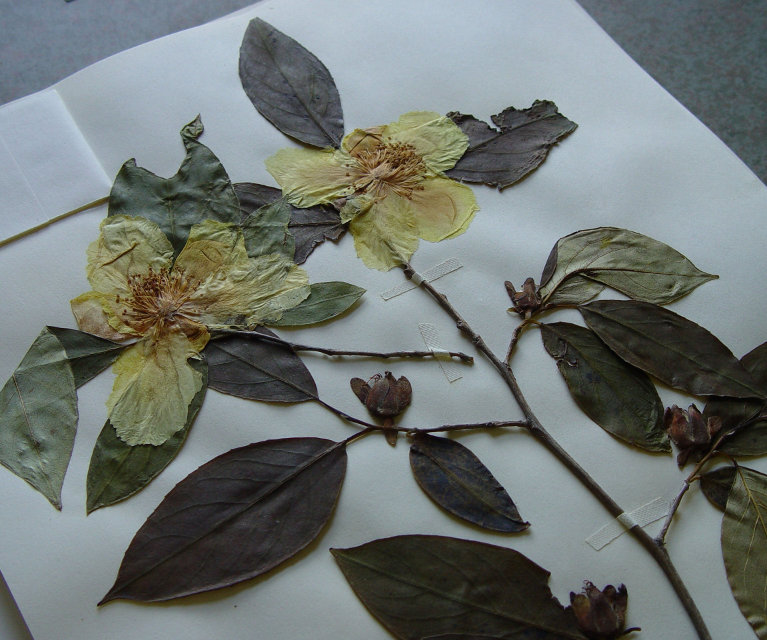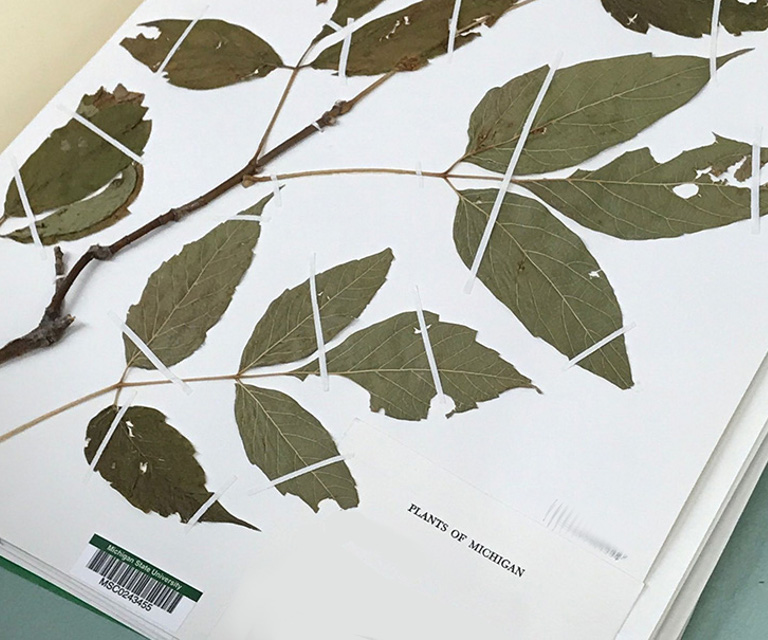

ABOUT HERBARIUM
A herbarium consists of preserved plant specimens, each with a label bearing documentary information. According to H.M. Lawrence (1967) “a Herbarium is a collection of plant specimens that usually have been dried and pressed, are arranged in the sequence of an accepted classification, and are available for reference or other scientific study”. Herbaria are repositories of dried or preserved specimens for vascular plants, bryophytes, lichens, algae and fungi. Herbarium specimens are used as references for comparison and identification of unknown specimens and their documentation, phyto geography etc. Herbaria is being the repositories of plants, provide the basis for an analytical study of the different type vegetation of a region for evolving strategies for sustainable utilization and effective conservation. Sometimes it may provide the source for learning the Materia medica of the local people, a knowledge which might have evolved by the local people practicing for thousands of years. The discovery of new active principles from the plant resources draws immediate attention to herbaria where the specimens could be seen for recognition so as to identify specimens in nature for collection, utilization and further research.
There are roughly 3,990 recognized herbaria on the planet today, with around 10,000 associated curators and biodiversity experts. All total, the world’s herbaria contain an expected 350,000,000 specimens that archive the world’s vegetation for as far back as 400 years. India and its neighbouring nations in particular Myanmar, Nepal, Afghanistan, Maldives, Bangladesh, Bhutan, Pakistan, People’s Republic of China and Sri Lanka have more than 14 million herbarium specimens. India stands nineteenth in position among the herbaria of the world for the archive of more than 3.5 million specimens representing more than 23 thousand type specimens.
There are 94 herbaria in India with acronyms recognized by the International Association for Plant Taxonomy (IAPT), New York Botanical Garden, USA and are published in the INDEX HERBARIORUM, an index of herbaria of the world. Out of 94 herbaria in India 59 are recognized. Central National Herbarium (CAL) of the Indian Botanic Garden, Botanical Survey of India (BSI) is the largest national repository with about 2 million plant species. William Roxburgh established this herbarium in 1795, now called Roxburgh House.
History of Herbarium
In 16th century, it was Luca Ghini who initiated the art of herbarium making by pressing and sewing specimens on sheets of paper. This art was disseminated throughout Europe by his students who mounted sheets and bound them into book volumes. Although the herbarium technique was a well-known botanical practice at the time of Linnaeus, he departed from the convention of mounting and binding the specimens into volumes. He mounted specimens on single sheets, sorting them horizontally, a practice followed even today.
Index Herbariorum, edited by Patrica Holmgren lists the world’s important herbaria data repository. Each herbarium is identified by an abbreviation known as acronym that is valuable in locating the type specimens of various species. The index was originally published by the International Association for Plant Taxonomy in Slovakia. It has its own staff and website and became available on-line from 1997. The ‘IH’ entry for a herbarium includes its physical location, URL, content, (e.g., number and type of specimens), founding date, as well as name, contact information and areas of expertise associated staff.
